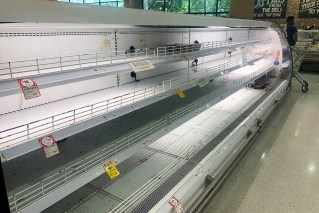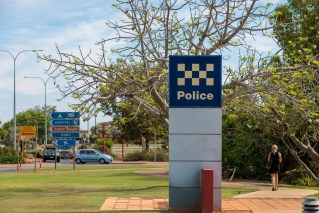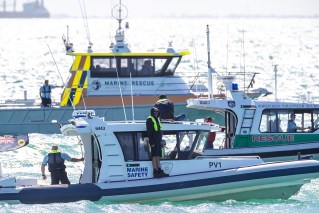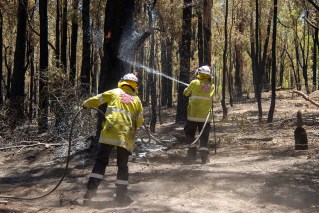Handbrakes applied to wrong BHP iron ore train before Pilbara runaway derailment, ATSB finds
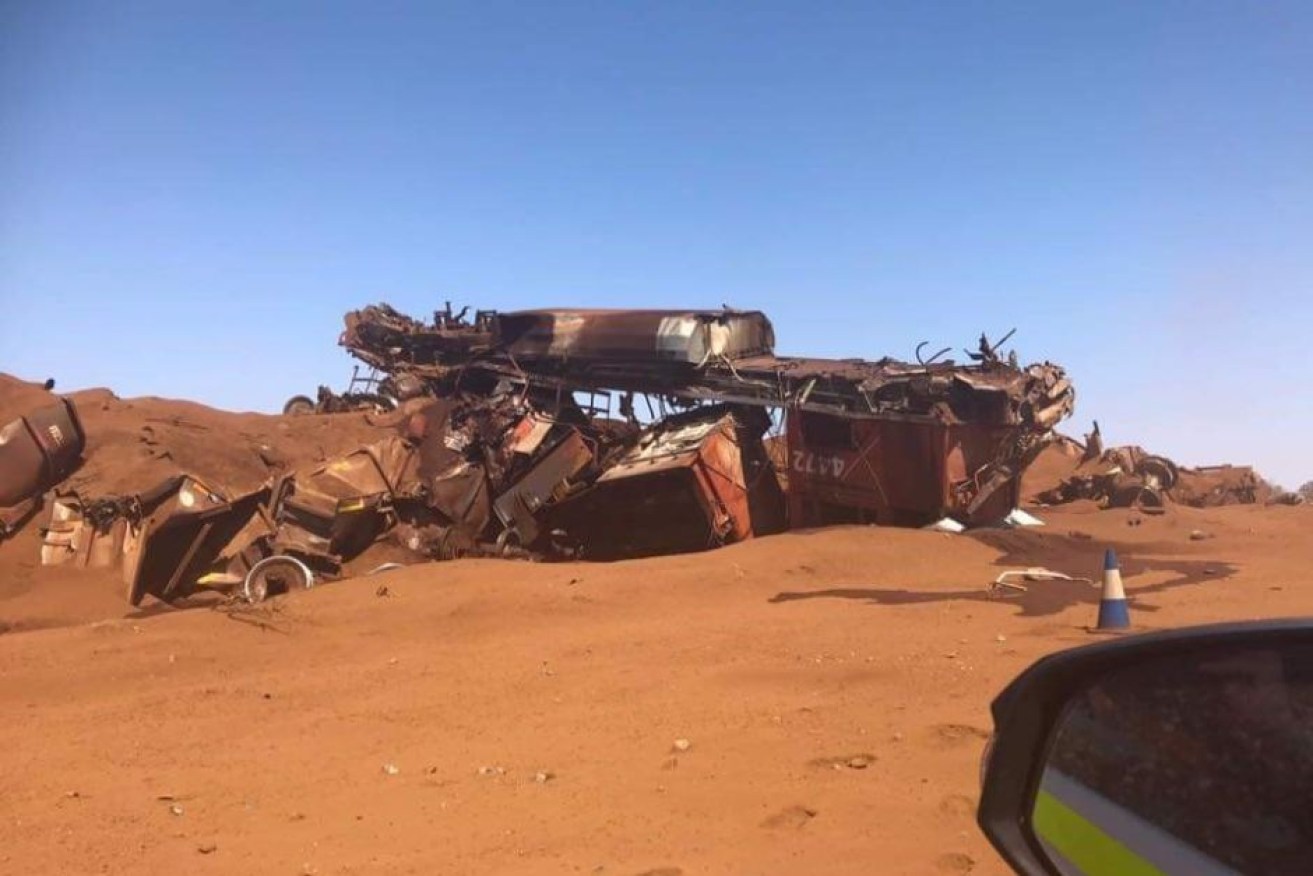
The ATSB report found maintenance workers applied brakes to the wrong train.
The Australian Transport Safety Bureau (ATSB) has found there were several issues that led to the derailment of a BHP ore train in Western Australia’s Pilbara region, including how a rail gang had started locking down the wrong train.
The fully-laden runaway train was deliberately derailed early on November 5 last year about 120 kilometres south of Port Hedland.
The train had taken off while its driver was out of the cabin, travelling more than 90 kilometres before being derailed by workers at BHP’s Integrated Remote Operations Centre in Perth, about 1500 kilometres away.
A report by the ATSB said a rail gang was sent to help the driver after the ore train came to a stop with a disconnected cable, but they mistakenly went to another train on an adjacent track.
As the gang started applying handbrakes to cars on the wrong train, the one they were supposed to be working on started rolling away.
Two locomotives were destroyed in the subsequent derailment, along with 245 ore cars and two kilometres of track.
But BHP has said even if the maintenance team had made it to the right train, they would not have been able to stop it from moving away because an emergency brake in the lead locomotive had not been properly applied.

Two locomotives and 245 ore cars were destroyed in the derailment. Photo: ABC News
The details about the failed efforts to assist ore train M02712 have been included in the ATSB’s preliminary report into the derailment – the first account of the disaster by an independent investigative body.
BHP has said the sequence of events laid out by the ATSB was “in line with our own findings”.
Automated brake brought train to halt
The loaded ore train, consisting of 268 cars and four locomotives, was on its way from Newman to Port Hedland when, at 3.39am, communication “between the lead locomotive and the combined end of train monitor was lost”.
This triggered an automated emergency brake and the train came to a stop 210 kilometres from Port Hedland.
The train driver made an emergency call to Hedland train control, with the controller blocking signals on the adjacent east track to protect the train from other rail movements and alerting maintenance gang personnel.
The driver was advised that handbrakes needed to be applied on the 268 ore cars, and he started doing so from the front of the train with the expectation the gang would start from the back.
He had applied a brake in the cabin, but this affected only the locomotive itself rather than the entire train.
The driver then started on the car brakes only minutes before 4am.
At about the same time, an empty ore train M02727 had stopped on the adjacent east track at a spot named Garden South.
Car brakes applied to wrong train
The maintenance team advised that they had arrived to start applying handbrakes from the back of the train and apparently did so, not knowing they were working on the wrong one.
But at 4.40am, the driver noticed the train moving forward, so he called the maintenance gang but received no response.
The driver of the empty train, M02727, contacted controllers and said he had seen M02712 passing his location at about 50 kph “with brakes dragging”.
As M02712 gathered speed, other drivers were told to leave their trains and get off the line to a safe place.
The runaway convoy reached speeds of more than 160 kph before slowing on rising grades, and was derailed just before 5:30am at a speed of 144 km/h.
The front two locomotives remained on the track, as did the first ore car and the last 22 cars.
Everything in between went off the rails.
The driver of the empty train told Hedland control that “the Redmont gang had mistakenly applied handbrakes to his train rather than to train M02712”.

The train was derailed from BHP’s control centre in Perth. Photo: BHP Billiton
It is understood the gang had only been at the wrong train for a matter of minutes.
Before M02712 had rolled, the driver had applied handbrakes to 73 cars.
BHP sacked the runaway train driver before Christmas, but he launched an unfair dismissal claim and has since agreed to a settlement with the mining giant.
Disconnected cable led to brake failure
The report said four brake systems were associated with the ore trains – an emergency brake in the locomotive, the car handbrakes, electrically controlled pneumatic braking control (ECPB) and a microprocessor automatic train protection system (ATP).
The ATP system was not stand alone and interfaced with other equipment on board, including the ECP, transponders and other control systems.
After the driver got out of the locomotive cabin, he told train control he had found a disconnection in the train line cable, which the ATSB said was “due to a disconnected connector between the 10th and 11th ore car”.
The ATP brake application system therefore was not working beyond the 10th car.
Meanwhile, equipment including car control devices (CCD) and a combined end of train device (CEOT) reverted to battery power.
Either when the battery power ran out or an hour elapsed, the brakes would stop working.
The ATSB said its ongoing investigation would include examination of train line cable connectors, pneumatic braking systems, effectiveness of operational risk management processes, emergency management plans, driver training and qualifications, dissemination of safety information, and effectiveness of runaway protection.
‘We’re making improvements’, BHP says

BHP said it had implemented additional measures to prevent a similar incident. Photo: BHP Billiton
BHP said the interim report had set out the events in line with its own findings on the runaway incident.
The company said the accident would not have happened if the emergency brake in the cabin was applied as required – although it admitted was also an electronic failure.
In a statement, BHP’s iron ore president Edgar Basto said the incident “was the result of procedural non-compliance by the driver as well as integration issues with the electronically pneumatic braking (ECPB) system to the rail network”.
“Prior to exiting the cabin of the lead locomotive, the driver did not apply the automatic brake handle to the emergency position as required in the operating procedure and in accordance with training provided,” Mr Basto said.
But he also said internal investigations “highlighted opportunities to improve the integration of the ECPB system across our rail network”.
Mr Basto said BHP had implemented additional measures to prevent a similar incident.
–ABC


